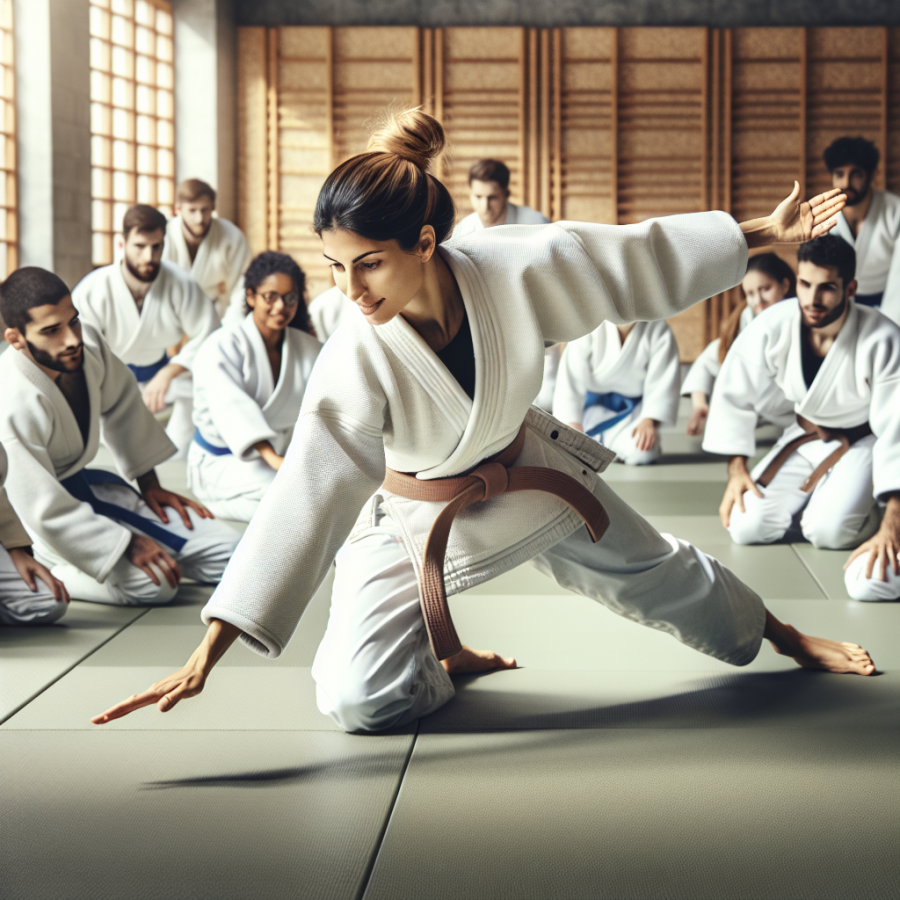Developing Mental Discipline and Physical Fitness through Judo Training
Mental discipline and physical fitness are two significant aspects that not only aid in self-development but also help cultivate a healthier lifestyle. It is worth noting that, judo training is one of the most effective ways to develop these. It is considerately more effective in fostering resilience and promoting endurance, strength, flexibility, speed, and cardio-respiratory fitness.
To start with, it is important to understand the connection between judo and mental discipline. Judo is a martial art that necessitates constant focus, concentration, and mental discipline. A judoka must always be alert and observant, ready to make quick decisions and adapt to changing scenarios. Additionally, the practice of judo teaches self-control and discipline as the fundamentals of the game are based on respect for oneself and the opponent. The mental composure raises triumphant over the physical strength in judo. Hence, the concentration on the tactics and strategies required to outwit the opponent helps enhance mental acuity and discipline.
One of the critical aspects of Judo training is instilling a sense of calm and peace in the mind while facing adversity. This calm is a direct result of intense training, where the practitioner gradually learns to react to the stress of an attack with a balanced and focused mind. Through continual practice, judokas develop a high level of mental toughness, allowing them to handle high-pressure situations efficiently not just in the judo mat, but also in daily life.
Moving on to the physical fitness development aspect, undoubtedly, judo training helps to build a strong physique. It requires the use of almost every major muscle group in the body, which results in enhanced physical strength and increased muscular endurance. It also helps with weight control, as it improves metabolic rate and burns a considerable amount of calories during training.
Judo also places a heavy emphasis on balance, coordination, and flexibility. These are essential in performing the various throws and maneuvers in judo. This kind of functional fitness proves advantageous in everyday life, contributing to improved posture, coordination, and a decreased risk of injury. Furthermore, judo training involves a lot of aerobic activity, which improves cardiovascular health and boosts stamina.
The principle of "maximum efficiency, minimum effort" in Judo, works on refining technical skills requiring less strength but achieving more significant impact. It allows a smaller or weaker person to overcome a stronger one. In turn, this develops an individual's confidence in their physical capabilities, leading to a better sense of self.
Read also:
Mastering the Battlefield: Top Strategy Board Games for 2023
Unlocking the Profound Principles and Techniques of Judo
Judo, literally meaning 'the gentle way,' is a traditional Japanese martial art that relies heavily on balance, timing, and the skilled manipulation of opponents' movements. This dynamic combat sport demands not only physical prowess but also strategic philosophical understanding. Unlocking the profound principles and techniques of Judo could amplify your proficiency, whether you are an established practitioner or a novice enthusiast.
Understanding the Principle of Maximum Efficiency: Judo simplifies the complexities of body mechanics into an axiom – "minimum effort, maximum efficiency". This principle maintains that individuals should use the least possible amount of physical strength to defeat an opponent, instead leveraging physics and the opponent's body weight. Mastering this strategy can require studying the science of body movement, positionings, and anatomical power points.
Integration of Mind and Body: It is often said in Judo that the mind leads the body. Achieving physical agility without mental coordination or vice versa creates an imbalance, affecting overall performance on the tatami (Judo mat). As such, practitioners must constantly work on cerebral components such as intuition, awareness, quick decision-making, and calmness under pressure.
Importance of Softness over Stiffness: Common misconceptions often associate martial arts with brute strength or toughness. However, in Judo, flexibility and adaptability win over rigidity. The ability to flow with opponents' movements, adapting strategies on the fly, typically leads to more victories. This principle of 'softness over stiffness' ties back to the notion of using the opponent's force against them instead of relying on one's own brute strength.
Techniques for Mastering the Art of Judo:
Strategic Breakfalls: The art of falling safely, or ukemi, is crucial in Judo, primarily because of the sport's emphasis on throws. Not only does this technique prevent injury, but it also becomes a launching pad for counterattacks.
Tactical Footwork: Footwork in Judo influences balance, speed, and directional change. Mastering skillful footwork enables judokas (Judo practitioners) to move swiftly to break opponents' balance, thereby creating opportunities for effective strikes or throws.
Perfecting Ne-Waza (Ground Techniques): While throws are an essential aspect of Judo, mastery of ne-waza techniques like pins, chokes, and joint locks can exponentially increase success on the mat. Undeniably, a well-rounded judoka is adept at both tachi-waza (standing techniques) and ne-waza.




